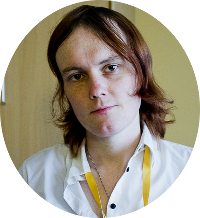The news late last week that the Office for National Statistics has calculated the percentage of LGB people in the UK as being around 1.5% has certainly caused some head-scratching in the gay press, because common perception has it that the number is much higher. There have been some pretty unscientific responses though, with one dating site claiming that there must be more than the calculated number simply because they have over 2 million registered users. For a start, I think it’s hubris to think that every LGB individual in the UK will have registered on their site and I suspect that perhaps they have people with multiple registrations. Cynics amongst you may think they just wanted an excuse for some publicity…
I’ve always been a little suspicious of the ONS’s results as I’ve been on the receiving end as an ISP. We’ve been asked to count number of customers in an environment where we’re unable to do so (Registration-free dial-up internet, back in the day) and break down customer types when we don’t distinguish ourselves. (Consumer vs. Business) Pointing out we couldn’t provide the numbers just results in snotty phone calls pointing out that failure to provide the information would result in a court appearance – I believe the people responsible for such things may have come up with some “creative” answers that may or may not have borne any relationship to reality.
However, in this case, I think they’ve got they survey about right if one actually reads the reports properly – it’s just the headline result that’s misleading. For starters, it’s an experimental survey and the ONS are very careful to point this out, the survey is based on how people identify, not on their actual orientation. As anyone involved in LGBT and probably any other minority group politics will know, identity is a minefield. To pick just one example, bisexual folk currently in a straight or gay relationship may identify as one of those two rather than as bisexual. I myself might describe myself as lesbian or bisexual, depending on mood and situation.
Secondly, there’s an “other” option at 0.5%, which takes us up to 2% anyway, plus “don’t know” for another 2.8%. Besides asexual, I can’t think of any other answer besides something on the LGB spectrum that might come under “other”. Do 0.5% of the population of the UK really identify as asexual? I would hazard a guess that the number is lower. And do we count “don’t know” as LGB? Some of those will have been straight folk refusing to answer for some reason, but a good portion will no doubt have been those questioning their sexuality – perhaps bi-curious or “I think I’m straight, I just happen to currently be in a gay/lesbian relationship”.
Finally, the surveys were carried out in peoples homes either face-to-face or via telephone. Even with efforts to make things anonymous to other householders, some people are going to be reluctant to admit they identify as LGB due to social pressures. Excluding one DTI workplace survey which had a very high non-response rate, the sum total for LGB plus don’t know/know response is similar across all surveys since 2008 that the ONS compares this one to – 4.9 to 6.5%. (In 2005 it was around 3%, possibly reflecting an increased tendency for people to openly identify as LGB) It’s also possibly quite telling that the region with the lowest percentage of LGB answers, Northern Ireland, also had the highest don’t knows/no response.
So if someone challenges you that only 1.5% of the population is LGB, there’s a simple response: When asked in an ONS survey, 5.2% of the UK population did not identify as straight

1 comment